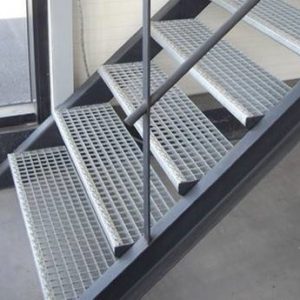

PRODUCT DETAILS
Email-us : info@tawajodindustrial.jo
Stair tread is available in grating, plate, perforated plate and expanded metal. It’s installed in the road or flooring, where the chances of skidding are there. This stair tread is available with or without angle frame. It easily retrofitted over existing grating or unsafe diamond checker plate assemblies. Meantime stair tread can be welded directly to current treads or stringers or can be bolted in place. Holes can be provided pre drilled for easy installation or can be drilled and countersunk in the field, without harming the surface. Therefore, grating stair treads are ideal in wet and oily situations such as oil rigs, food processing plants and marine applications.
Stair tread creates a permanently slip resistant surface that is resistant to elements such as grease, dust and oil. When retrofitting over concrete steps, non-slip stair treads is routinely mounted into masonry anchors. Stair treads have become an integral safety component for extreme wear longevity and continual safety. They are available in thicknesses of 1/8″ up to 1/2″ and standard depths of 8″ – 12″. It’s important that the correct grating load bar size and grating type is used based on the required stair tread span and loading. The table below is a basic guide used to establish the correct grating type required.

STAIR TREAD TYPES:
Expanded metal stair tread
Grating stair tread
Perforated stair tread
Welded steel stair tread
ADVANTAGES:
* Stair treads provide a durable walking surface but features benefits like grating which allow for drainage and air flow. It ensures slip resistance for many years to come.
* Stair treads have a protective finish such as paint or galvanizing. Without this surface treatment, stair treads can rust easily if exposed to moisture. Therefore, it should be primed, painted or hot dipped galvanized to prevent corrosion. Hot dipped galvanizing is the preferred method for corrosion resistance.
* Non-slip galvanized stair treads are formed to job specifications. Treads can be formed into a channel to completely cover an existing slippery stair.
* Stair treads are easily retrofitted over existing concrete, grating or unsafe diamond checker plate assemblies. It can be welded directly onto current treads or can be bolted in place.
